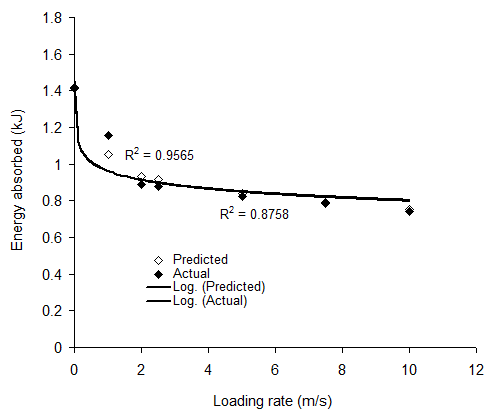Empirical Analysis of Energy Absorption by Fractured Carbon Fibre Reinforced Polymer based on Materials Loading Rate and Crush Distance
Keywords:
Energy Absorption, Carbon Fibre Reinforced Polymer, Loading Rate, Crush DistanceAbstract
This paper presents a successful attempt to empirically analyze the energy absorption E, by fractured carbon fibre reinforced polymer based on the materials loading rate Ѳ, and crush distance δ. This followed derivation of a model expression relating the energy absorbed, loading rate and crush distance. The carbon fibre reinforced polymer was prepared, following a well detailed step-wise route, involving monomer polymerization, spinning of resulting precursor to form fibre, oxidation/carbonization of fibre to form carbon fibre and then coating to embellish the material. At decreasing peak crush force, the energy absorption decreases while loading rate and crush distance increases and decreases respectively. In the course of the model derivation, the range of crushing distance and loading rate considered are 0.04162 – 0.05848m and 0.001 - 10.0 m/s respectively. The validity of the derived model expressed as; E = Ϧeκδ - ẞlnѲ + N was rooted in the core expression E+ ẞlnѲ ≈ Ϧeκδ+ N where both side of the expression correspondingly near-equal. Results generated from both experiment and model prediction indicates that energy absorbed decreases with increased loading rate and decreased crush distance. Evaluated results show that the correlations between the energy absorbed and loading rate & crush distance are 0.9780 and 0.9358 & 0.9795 and 0.9810, using model-predicted and experimental results respectively. For every change in the loading rate and crush distance, the overall standard error incurred on predicting the energy absorbed by the fractured composite, relative to experimental results is ˂ 0.05%. The maximum differential between the experimentally determined and model-predicted energy absorption by fractured carbon fibre reinforced polymer is – 0.1046kJ. The energy absorbed by the fractured composite per unit loading rate and crush distance are & and 19.5567 and 23.5724 as evaluated from experimental and derived model results.


